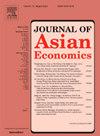Impact of high-speed rail on the mismatch of labor and industry allocations: Evidence from Chinese cities in 2000-2019
Abstract
The uneven development of China can be reflected by the mismatch of labor and industry distributions (MLIS) in terms of spatial structure. Industries usually agglomerate in large cities where a strict household registration system causing high barriers with respect to population and labor entry. Infrastructures that reduce the cost of labor and technology mobility, as represented by high-speed rail (HSR), are possible improvement to regulate such distortions as the two agglomerated into opposite directions. This paper focuses on the impact of HSR on MLIS using a large panel dataset comprising 285 Chinese cities in 2000–2019. A difference-in-difference analysis is introduced to carried out empirical analyses. This paper finds that HSR can significantly mitigate the MLIS in prefecture level cities, but not in cities above prefecture level. The heterogeneous effects of HSR are then discussed with respect to industries and MLIS types. Further mechanism tests show that HSR’s mitigating effect on MLIS comes from the employment effect and the innovation effect. Finally, policy recommendations are provided on HSR investment to improve China's uneven development from the perspective of synergy labor and industry distributions.

 求助内容:
求助内容: 应助结果提醒方式:
应助结果提醒方式:


